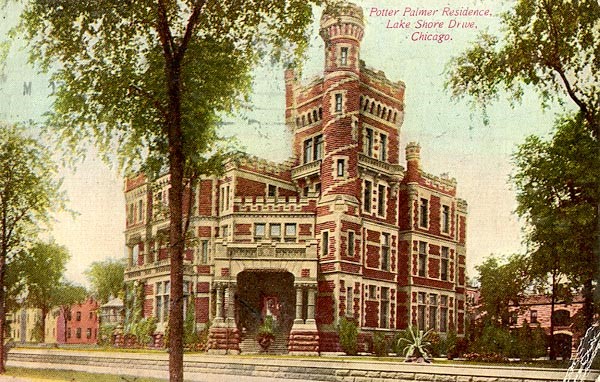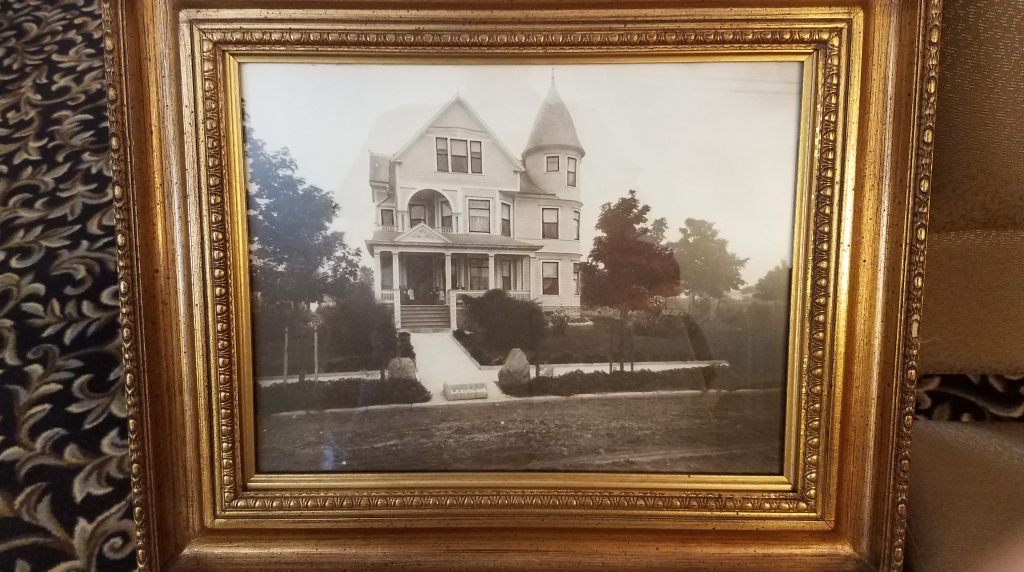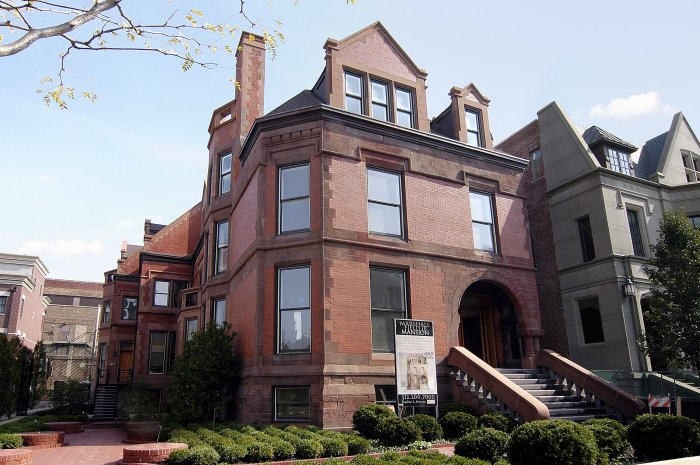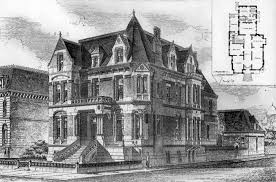
Back in the day, Chicago was home to dozens of great and beautiful Victorian homes. The largest mansions were built for the city’s well-heeled social elite Many like the Palmer Potter mansion on Lakeshore Drive which was sadly torn down.
Many others were of frame construction and are easily recognized by their trademarked tower. They were not considered the mansions their time but rather beautiful family homes. A few have survived and restored.
At least two were converted into funeral homes.

The Budlong mansion on the Northwest corner of Foster Avenue (5200 N.) and Western Avenue (2400 W.) was a good example. It was owned by Lyman Budlong, the founder of the Budlong pickle Farms and factory just a block or two west in what was then Bowmanville.
Located at 2460 W Foster, Chicago, Illinois, the house was built in 1896. At that time the area, now known as Budlong Woods in the Lincoln Square neighborhood, the Budlong Pickle Company operated a huge farm and factory to produce pickles and greenhouses growing flowers.
After the Budlong family left, it was then the Drake Funeral home, for many years which itself relocated a bit north on Western Avenue about 1955. Budlong mansion was torn down the land began a Henry’s drive in and more recently a convenience store.

the Abbott mansion, was later for a time used as the Maginot Funeral Home, at 4605 North Hermitage Ave. then reconverted back to a family home.
in 1888 it was purchased by Dr. Wallace Abbott, a local doctor and pharmacist. He commissioned Rudolph Dahlgren and Oscar Livendahl to design the current home. It was completed in 1891.
The company he founded, Abbott Labs, moved with the family to this location in 1891, then the company moved to the first of several properties on Ravenswood.
Dr. Abbott died on his way home from the office one day in July 1921. The remaining Abbotts moved in 1925, selling the building to the Maginot family who used the building as the Maginot Funeral Home for many years.
Chicago’s greatest Gilded Age mansions
Most all of the mansions constructed by the city’s well-heeled social elite between the Great Chicago Fire of 1871 and the early 20th Century met the indignity of a wrecking ball.
Potter Palmer constructed a million-dollar mansion on the formerly-swampy Lake Shore Drive in 1882, establishing the city’s most affluent neighborhood on the North Side. Still, it wasn’t Chicago’s first affluent neighborhood.
Before the Gold Coast, there was “Millionaire’s Row,” between the 1600 to 2200 blocks of Prairie Avenue on the Near South Side.
Like many of Chicago’s main streets, Prairie Avenue evolved from a Native American trail that connected Chicago’s Fort Dearborn with Indiana’s Fort Wayne. The area became desirable because of its proximity to downtown business without the hassle of crossing the Chicago River. Things really flourished after the Great Fire of 1871 because Prairie Avenue and its immediate surroundings were untouched by the fire.

The Kimball House, (of piano and organ fame) which today houses the U.S. Soccer Federation.

Marshall Field’s mansion was designed by Richard Morris Hunt (architect of the Vanderbilts’ “The Breakers” in Newport, Rhode Island).

Daniel Burnham designed the home of John B. Sherman, one of the founders of the Union Stock Yard. Burnham met and then married Sherman’s daughter as a result of this commission. Later he lived in the mansion he’d designed.

George Pullman enlisted Solon S. Beman to design his Prairie Avenue home after Beman designed the entire layout of his company town, “Pullman. ”
Henry Ives Cobb, designer of the Newberry Library and many University of Chicago collegiate gothic buildings, designed two homes that are actually still standing today.

Incredibly, his Rees House was hoisted up and moved down the street to make way for McCormick Place’s expansion in 2014.

H.H. Richardson’s Romanesque Glessner House was saved from the wrecking ball in 1966.
Eventually all but seven of the 90 mansions that lined the street were razed.
And so it goes.
Holy moly… you are really rocking it!
LikeLike